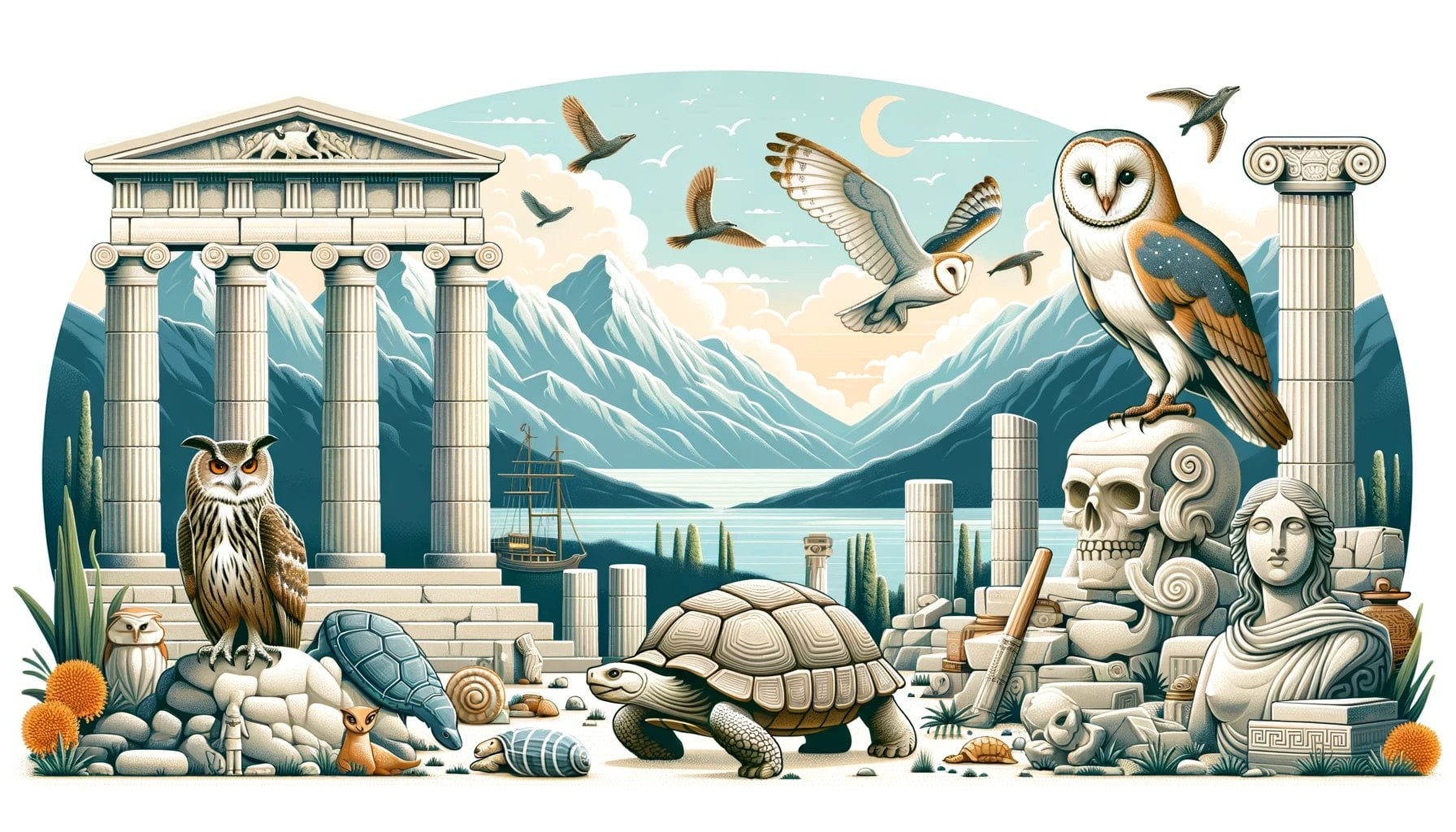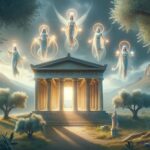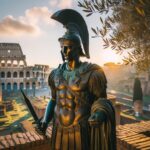Ancient Greece, with its rich tapestry of history and legendary tales, is a realm that continues to captivate the imagination of people worldwide. Within this fascinating world, the animals of ancient Greece occupy a prominent and meaningful role. From the mythical beasts that roam the realms of Greek mythology to the creatures that played a vital part in the daily lives of the ancient Greeks, this article delves into the captivating significance of animals in ancient Greece. Journey with us as we explore the intricate relationship between ancient Greek society and the creatures that inhabited their mythos and everyday existence.
Key Takeaways:
- Animals in ancient Greece and Rome served various roles and had important functions, including as food, work animals, entertainment, and pets.
- Marine life and fishing played a significant role in the lives of ancient Greeks and Romans, providing income, food, and entertainment. Various fish species were popular meals, with octopuses being particularly valued.
- Animals held cultural significance in both ancient Greek and Roman societies, with livestock breeding playing a vital role in the economy. Dolphins and whales were featured in stories and legends.
- Notable deities and historical figures in ancient Greece and Rome, such as Artemis, Apollo, Athena, Poseidon, and Jason, were associated with animals.
Animals in Ancient Greece and Rome
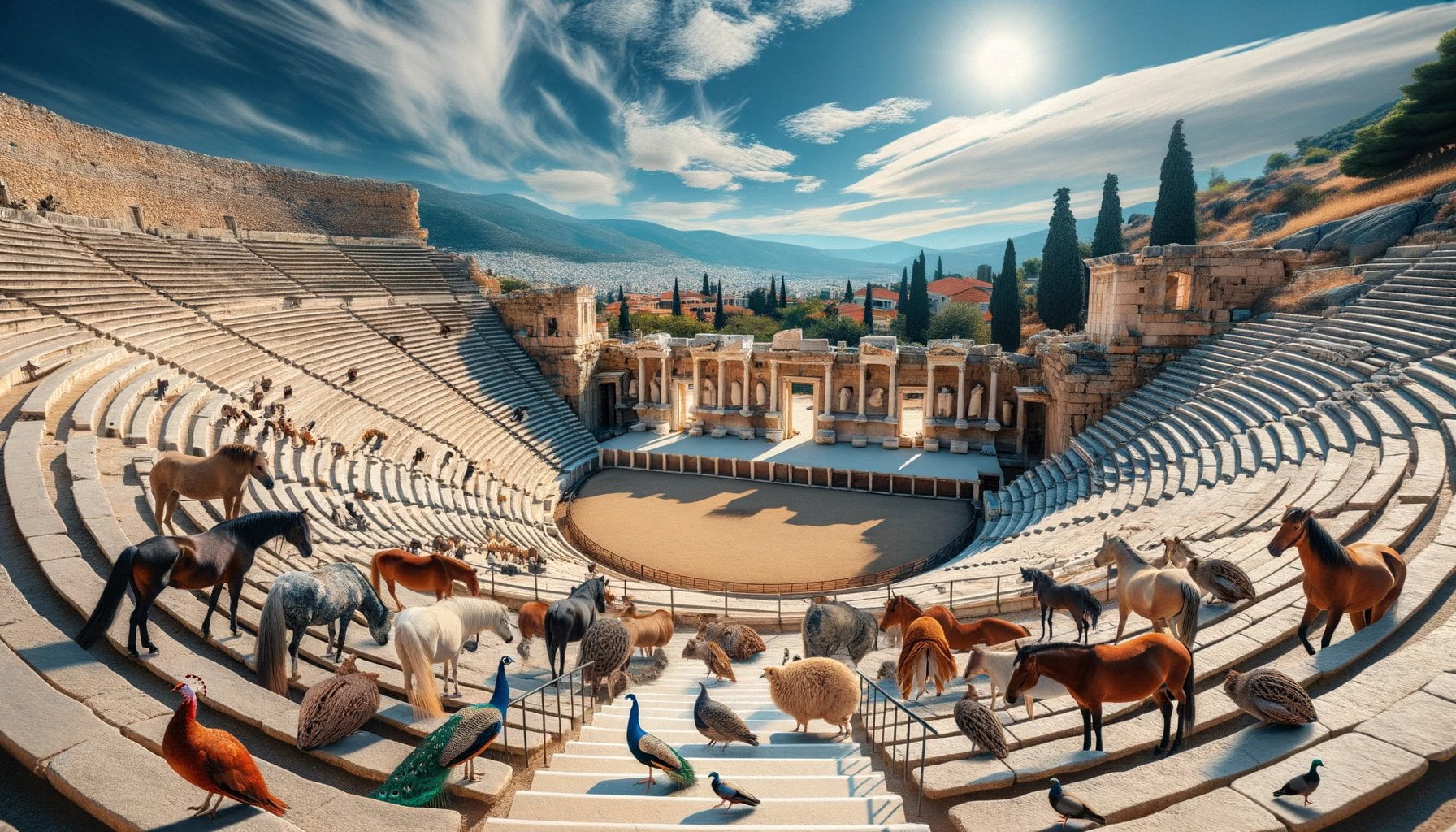
When we think of ancient civilizations like Greece and Rome, we often picture grand temples, fierce warriors, and mythical gods. But what about the animals that roamed these ancient lands? In this article, we will explore the significance of animals in ancient Greece, diving into their roles in mythology and everyday life.
Marine Life and Fishing
For the ancient Greeks and Romans, the seas teemed with life and provided a vital source of sustenance. Fish such as tuna, sturgeons, mackerel, jellyfish, anchovies, lobsters, sprat, red mullet, oysters, mussels, sea urchins, salted fish, squid, and octopus were not only consumed as food but also enjoyed as a form of entertainment. Octopuses, in particular, were highly valued and even exchanged as gifts.
To catch this abundance of marine life, ancient fishermen employed various techniques. Nets, rods, traps, and lines with hooks were all used to reel in their catches. Fishing lines were often adorned with artificial flies, designed to imitate the movements of insects. The sea god Poseidon, known as Neptune in Roman mythology, was often depicted with his trident, representing his prowess in spearfishing.
Animals in Culture and Literature
Animals held great cultural significance in ancient Greek and Roman societies. The practice of captive breeding of livestock, particularly cattle, played a crucial role in the economy. Dolphins and whales frequently made appearances in stories and legends, with dolphins symbolizing rescue and friendship. In one tale, a young boy even fed bread to a dolphin.
Interestingly, while ancient artworks often depict lobsters, they are not always anatomically accurate. However, ancient Romans possessed detailed knowledge of their features, including their distinctive five arms and claws. The renowned naturalist Pliny recognized the lobster as a noteworthy creature.
Throughout ancient Greek literature, stories and poems featuring fishermen and fishing were commonplace. These writings often portrayed fishermen as heroic figures or symbols of poverty and struggle, emphasizing the importance of fishing in the daily lives of the ancient Greeks.
Notable Deities and Figures
In ancient Greece and Rome, many deities and historical figures were connected to animals. Let’s explore a few of these notable figures:
- Artemis: As the goddess of the hunt, Artemis was often associated with animals such as deer and wild boars.
- Apollo: Apollo, the god of music and poetry, was sometimes depicted with a wolf or a dolphin.
- Athena: The wise goddess Athena had an owl as her sacred animal, symbolizing wisdom and knowledge.
- Poseidon: As the god of the sea, Poseidon was closely associated with marine creatures, particularly horses.
- Ares: Ares, the god of war, was linked to savage animals like vultures and wild boars.
- Hera: As the queen of the gods, Hera’s animal associations included peacocks and cows.
- Demeter: Demeter, the goddess of agriculture, was often depicted with a snake, symbolizing the earth’s fertility.
- Achilles: The legendary hero Achilles had a loyal horse named Xanthos.
- Medea: Medea, the enchantress in Greek mythology, possessed the power to control serpents.
- Jason: The hero Jason embarked on a quest aboard the ship Argo, whose masthead was ornamented with a golden fleece representing a ram.
These are just a few examples of the fascinating connections between ancient Greek and Roman figures and the animal world.
In conclusion, animals played diverse roles in the ancient civilizations of Greece and Rome. They provided food, served as working animals, and even held sacred symbolism. Through their mythology and everyday life, the ancient Greeks and Romans formed intricate connections with the animal kingdom. By exploring these relationships, we gain a deeper understanding of the profound impact animals had on these ancient societies.
Sources:
1. Animals in ancient Greece and Rome – Wikipedia
In ancient Greece, swords played a vital role in warfare. Explore the rich history of swords of ancient Greece by clicking here.
Discover the fascinating tales of gods and heroes in ancient Greece. Uncover their incredible feats and captivating stories by clicking here.
Did you know that ancient Greece had colonies spread far and wide? Learn about these colonies and their significance by clicking here.
Boxing was not only a physical sport in ancient Greece but also a display of strength and skill. Dive into the world of boxing in ancient Greece by clicking here.
Ancient Greece was known for its legendary poets who contributed greatly to literature. Immerse yourself in the works of poets in ancient Greece by clicking here.
The Importance of Domesticated Animals in Everyday Life
Horses: A Versatile Companion
Horses were highly valued in ancient Greece for their versatility and played a crucial role in everyday life. Not only were they used for transportation, but they also played a vital role in warfare. The ancient Greeks recognized the power, strength, and agility of horses, making them an integral part of their society.
Cows, Goats, and Sheep: Essential Sources of Sustenance
Cows, goats, and sheep were other significant domesticated animals in ancient Greece. These animals served as the backbone of Greek agriculture, providing important resources for nutrition and clothing. Milk from cows, goats, and sheep was a crucial source of sustenance for the ancient Greek population. Additionally, these animals provided meat, serving as a significant food source.
Sheep, in particular, were highly valued for their wool. The ancient Greeks recognized the value of sheep’s wool in creating textiles and clothing. The wool industry played a vital role in the economy, with artisans producing garments and tapestries from this valuable material.
Animals in Ancient Greek Religion and Culture
Animals held great importance in ancient Greek religion and culture. Specific animals were associated with particular deities and symbolized various qualities. For example, owls were often linked with the goddess Athena and were seen as symbols of wisdom.
Animals played a significant role in religious rituals, representing a third point of reference alongside gods and humans. The close relationship between humans and animals in ancient Greece helped shape their understanding of the world and the human condition.
Key Takeaways:
- Horses played a multifaceted role in ancient Greek society, serving as a means of transportation and playing a crucial role in warfare.
- Cows, goats, and sheep provided essential resources for nutrition and clothing, with their milk, meat, and wool serving as vital sources of sustenance for the ancient Greeks.
- Animals, such as owls, held symbolism in ancient Greek religion and culture, representing specific deities and embodying various qualities.
- The close relationship between humans and animals in ancient Greece shaped their beliefs, understanding, and rituals.
Sources:
– History Rise: Animals in Ancient Greece
– Bryn Mawr Classical Review: Animals in Ancient Greek Religion
Exotic Animals in Ancient Greece: Trade and Significance
Ancient Greece was a society deeply intertwined with the natural world, and its relationship with animals was no exception. From the everyday life of ancient Greeks to the stories and myths they told, animals held a significant place in their culture. In this article, we will explore the trade and significance of exotic animals in ancient Greece, shedding light on the intriguing connections between humans and creatures from faraway lands.
The Trade of Exotic Animals:
– Exotic animals were highly sought after in ancient Greece, as they represented a symbol of wealth, power, and prestige.
– Trade routes extended from the Mediterranean to Africa, the Middle East, and beyond, allowing for the acquisition of animals from distant lands.
– The prosperous city-state of Athens, known for its thriving economy, became a hub for the trade of exotic animals.
– [Exotic Animals in Ancient Greece: Trade and Significance] included creatures such as elephants, lions, leopards, camels, giraffes, and even monkeys, among others.
– These animals were often obtained through diplomatic exchanges, gifts, or purchased from traders who traveled along established trade routes.
– The demand for exotic animals was driven not only by their rarity but also by their importance in religious and cultural practices.
The Significance of Exotic Animals:
– Exotic animals held a multifaceted significance in ancient Greek society, serving both practical and symbolic purposes.
– They were frequently featured in religious ceremonies and festivals, where they were seen as representations of deities or divine messengers.
– The presence of these extraordinary creatures reinforced the belief in a connection between the human and divine realms.
– Exotic animals were also used for entertainment purposes, captivating audiences with their beauty, strength, and unusual behaviors.
– In the world of ancient Greek mythology, these creatures often played key roles in epic tales and legends, embodying various qualities and lessons.
– For example, the Nemean lion served as a formidable adversary for the hero Heracles, symbolizing strength and courage.
Exotic Animals in Everyday Life:
– Beyond their role in religious and cultural contexts, exotic animals found their way into the everyday lives of ancient Greeks.
– During the Hellenistic period, private menageries and zoological gardens became popular among the elite, showcasing a diverse array of exotic species.
– Exotic pets, such as monkeys and parrots, were kept in households of the wealthy as a status symbol and source of entertainment.
– The presence of these animals in daily life was a testament to the influence of Greek trade networks and the curiosity of its people.
Key Takeaways:
– Exotic animals were highly sought after in ancient Greece, representing wealth and power.
– Athens served as a hub for the trade of exotic animals.
– Exotic animals had symbolic significance in religious and cultural practices, representing divine connections and lessons.
– Exotic animals were used for entertainment purposes, captivating audiences with their beauty and unique behaviors.
– Exotic animals found their way into everyday life, with private menageries and households of the wealthy showcasing a diverse array of species.
Sources:
– Wikipedia: Animals in ancient Greece and Rome
– Encyclopedia Britannica: Ancient Rome – Hunting, fishing, and fowling
The Symbolism of Animals in Art and Literature
In ancient Greece, animals played a significant role in both art and literature, serving as powerful symbols that enriched the culture and beliefs of the civilization. From the majestic owl representing wisdom to the agile dolphin symbolizing rescue and friendship, animals held immense significance in Greek society. Let’s explore the intriguing world of animals in ancient Greece and their symbolism in art and literature.
Key Takeaways:
– Animals in ancient Greece played a significant role in art and literature, symbolizing various qualities and concepts.
– The symbolic representation of animals added depth and meaning to Greek art and literature, allowing for the exploration of complex themes and ideas.
– Animals such as the owl, dolphin, and snake held specific symbolic associations in ancient Greek culture.
– Through the depiction of animals, ancient Greek artists and writers conveyed messages and emphasized the importance of certain virtues and qualities.
– Animals also served as a source of inspiration for ancient Greek artists, who frequently incorporated them into their sculptures, pottery, and other artistic creations.
Ancient Greece was a civilization that cherished the intricacies of symbolism, and animals often played a starring role in their art and literature. The ancient Greeks believed that animals possessed qualities and traits that could be attributed to both humans and gods. As a result, animals were often depicted alongside humans in sculptures, reliefs, and paintings, representing their diverse roles and symbolic associations.
One of the most prominent animal symbols in ancient Greece was the owl, associated with wisdom and closely linked to the goddess Athena. The owl, with its piercing gaze and nocturnal nature, embodied the intellect and insight that the goddess of wisdom represented. As a result, the owl became a beloved emblem of Athena, prominently featured in sculptures and artwork depicting the goddess. This captivating creature served as a visual reminder of the pursuit of knowledge and the importance of wisdom in Greek society.
Another animal symbol that held great significance in ancient Greek art and literature was the dolphin. With its association to the sea and the god Poseidon, the dolphin embodied themes such as rescue, friendship, and protection. Dolphins frequently appeared in stories and legends, often depicted as loyal companions to sailors and heroes. Their graceful and playful nature lent itself well to artistic representations, with ancient Greek artists capturing their movement and fluidity in sculptures and pottery.
Snakes were also depicted in ancient Greek art and literature, symbolizing various concepts such as fertility, rebirth, and healing. Snakes were associated with the god Apollo, known for his ability to heal and bring about transformation. In ancient Greek mythology, snakes were believed to possess healing powers, and their presence in artwork and literature served as a reminder of the god’s ability to restore and renew.
In addition to their symbolic associations, animals provided inspiration for ancient Greek artists. From the intricate detailing of animal figures in sculpture to the vivid depictions of mythical creatures in pottery, animals were a common subject in Greek art. They brought life and movement to the artwork, allowing artists to convey narratives and evoke emotions through their representations.
Ancient Greek literature also found inspiration in the animal kingdom. From fables featuring talking animals to epic poems highlighting the heroic deeds of mythological creatures, animals played an integral role in storytelling. These literary works often employed animal symbolism to convey moral lessons, explore human behavior, and reflect on the complexities of the world.
In conclusion, animals held immense symbolism in ancient Greek art and literature, contributing to the rich tapestry of Greek culture and beliefs. From the wisdom embodied by the owl to the friendship represented by the dolphin, animals provided a means of exploring and understanding the world in both mythological and everyday contexts. The artistry and storytelling of ancient Greece incorporated animals as powerful symbols, allowing for the expression of complex ideas and the creation of captivating narratives.
Sources:
– Divine Symbols and Adored Pets: The Animals of Ancient Greece – source
– Animals in ancient Greece and Rome – Wikipedia – source
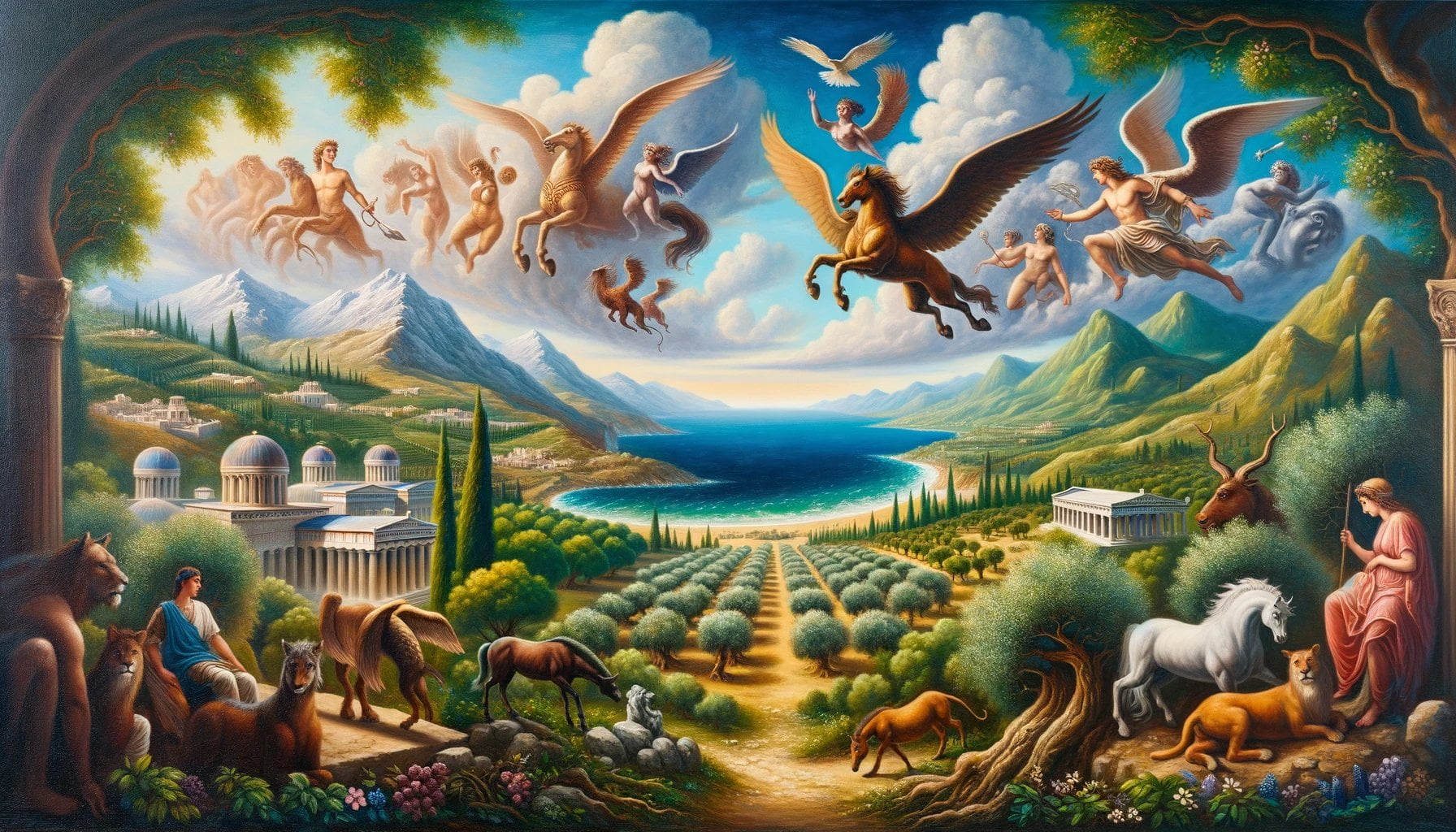
FAQ
Q1: What roles did animals play in ancient Greece and Rome?
A1: Animals in ancient Greece and Rome served various roles and functions such as being used for food, work, entertainment, and as pets. They were commonly eaten as food, used as work animals, and even utilized in the military. Additionally, pets such as parrots, cats, and dogs were kept by many people in both societies.
Q2: What types of fish were commonly eaten in ancient Greece and Rome?
A2: In both ancient Greece and Rome, a variety of fish species were popular meals. Some of the commonly consumed fish included tuna, sturgeons, mackerel, jellyfish, anchovies, lobsters, sprat, red mullet, oysters, mussels, sea urchins, salted fish, squid, and octopus. Certain fish species, like Bluefin Tuna, were considered expensive delicacies.
Q3: How were animals used in fishing in ancient Greece and Rome?
A3: Fishing played a significant role in the ancient Greek and Roman societies. Various fishing techniques were employed, including nets, rods, traps, and lines with hooks. Poseidon, known as Neptune in Roman mythology, even carried a trident for spearfishing. Fishermen sold their catches in bustling fish markets, and whaling was also practiced in specific regions.
Q4: What was the significance of domesticated animals like horses, cows, goats, and sheep in ancient Greece?
A4: Domesticated animals like horses, cows, goats, and sheep served vital purposes in ancient Greek society. Horses, for example, were highly valued for transportation and played a crucial role in warfare. Cows, goats, and sheep were primarily raised for their milk, meat, and wool, which provided essential sources of nutrition and clothing.
Q5: How were animals associated with mythology and culture in ancient Greece and Rome?
A5: Animals held great importance in ancient Greek and Roman mythology and culture. Certain animals were associated with specific deities and symbolized various qualities. For example, owls were often linked with the goddess Athena and were seen as symbols of wisdom. Animals also played a role in religious rituals and were considered companions to humans, contributing to the understanding of the divine and shaping the human condition.
- Sept 31 Myth: Unveiling Calendar Secrets - March 18, 2025
- How Long & Till December 18, 2025: Accurate Countdown Guide - March 18, 2025
- Discover Japanese Artists: A Complete History - March 18, 2025
